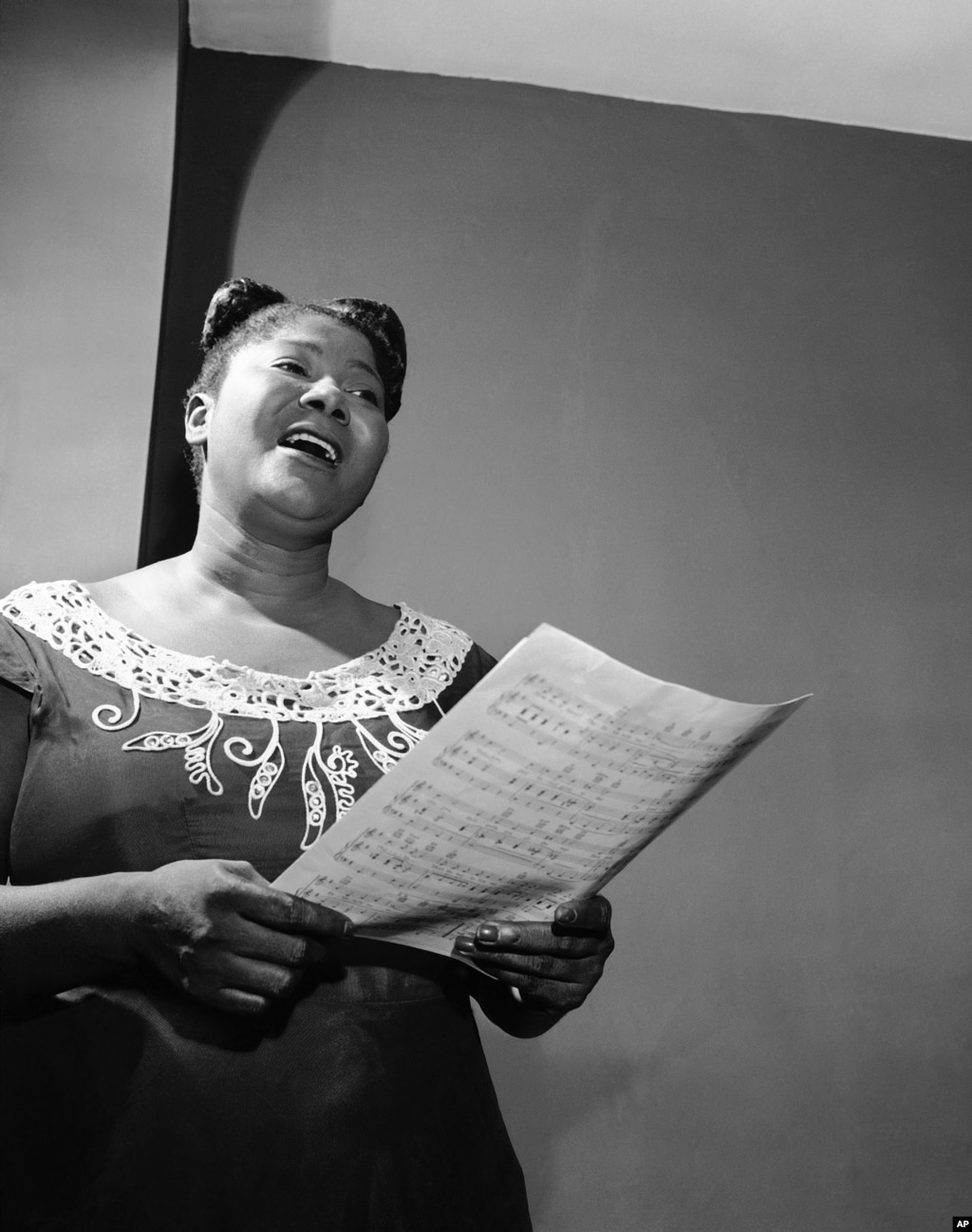
Hello, and welcome to As It Is from VOA Learning English!
I’m Christopher Cruise in Washington.
Today on the program we will report on efforts to save 20century recordings of black gospel music.
“We have 8,000-plus individual sides digitized and catalogued -- and more coming in every day.”
Efforts to save 20th century gospel music, today on As It Is.
Restoring Black Gospel Music
America’s Smithsonian Institution has announced plans to add some rare music recordings to a new museum in Washington, DC. For the past few years, the recordings have been stored at Baylor University in Texas. The collection is known as the Black Gospel Music Restoration Project.
Bob Darden is now a college professor in Waco, Texas. But in 1960, he was a small child whose father had just brought home the family’s first long-playing phonograph records. Two of the record albums did not interest the boy, but the other one was different.
“The third was Mahalia Jackson’s Christmas album. And my parents say (that at) about age six or so that I played Mahalia’s album over and over.”
(MUSIC)
Bob Darden’s interest in that kind of music never went away. When he grew up, he became gospel music editor for Billboard Magazine.
As years passed, he found it harder and harder to find the music he loved. In 2005, Bob Darden wrote a letter to the New York Times newspaper. He expressed concern that gospel music was disappearing. He says a man named Charles Royce read the letter.
“And called that day and said, ‘tell me what we need to do and I’ll help fund it.’”
Charles Royce’s gift was used to create the Black Gospel Music Restoration Project at Baylor, where Bob Darden taught. The music collection has grown.
“We have 8,000-plus individual sides digitized and catalogued --and more coming in every day.”
That is 8,000 mostly 45-rpm gospel records. The vinyl discs date from the 1940s to the 1970s.
In 2011, the wife of former President George W. Bush learned of the collection. Laura Bush has a home in Waco. She serves on the cultural council of the Smithsonian Institution’s new Museum of African-American History and Culture. Dwandalyn Reece is the museum’s curator of music and performing arts.

“They let us know of this wonderful project that was going on in Texas, and then a team of people came up to show us the project and what they’ve accomplished, and we were all very impressed.”
The 45-rpm gospel records were especially important. They often had a “hit” -- or popular song -- on one side. Bob Darden describes the other side.
“It’s usually where the artist does their own personal song.”
He says many of the “second side” recordings were civil rights songs that few people knew about. He says that makes the records important historical objects.
Historian Dwandalyn Reece says this was a surprise.
“On one level you think people are just talking about religion, and the other side they have a message embedded in that as well. The whole idea of being, of have, like a civil rights movement message in a gospel record was, it just totally blew my mind.”
Bob Darden says African-American gospel music was the basis for most American music in the 20th century.
“Every rock-and-roll African American artist, every rap, every soul artist came out of the church, and sang these songs.”
Now, parts of this collection are on the way to Washington. Dwandalyn Reece says it is an important gift to the United States and the world. She says the Museum of African-American History and Culture will make the music available for more people.
“Gives a forum for more people to hear this music and have access to it. I see this as an untold story that hasn’t gotten its due yet.”
The new museum is set to open in 2015.
(MUSIC)
We would like to know what you want to hear about on a future show.
We read every message you send us.
Write to us at:
VOA Learning English
Washington, DC 20237 USA
Or send an e-mail to: LearningEnglish@VOANews.com
I’m Christopher Cruise.
Thanks for listening!
I’ll see you next week with more news about American music on The Voice of America!





